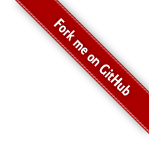toolchain » LLVM
2024-03-12 :: 5669 WordsLLVM
概述
LLVM最初设计时,主要做优化方面的研究,所以当时的全称叫Low Level Virtual Machine。后来因为成为了编译器,官方放弃了这个称呼,但保留了LLVM的简称。
官网:
http://llvm.org/
代码:
https://github.com/llvm/llvm-project
LLVM的主要作者是Chris Lattner。
他的个人主页:
http://nondot.org/sabre/
Chris Lattner,1978年生,美国人。University of Portland本科(2000)+UIUC博士(2005)。LLVM、Swift、MLIR的作者。先后任职于Apple、Tesla、Google、SiFive。
架构设计:
http://www.aosabook.org/en/llvm.html
顺便提一下,这个网站本身就是个宝库。
架构设计中文版:
https://zhuanlan.zhihu.com/p/446800631
https://evian-zhang.github.io/llvm-ir-tutorial/
LLVM IR入门指南
https://getting-started-with-llvm-core-libraries-zh-cn.readthedocs.io/zh-cn/latest/index.html
Getting Started with LLVM Core Libraries(中文版)
LLVM主要专注于后端的代码生成。Chris Lattner还开发了前端项目clang。LLVM早期使用GCC作为前端,目前已经改为clang。
https://zhuanlan.zhihu.com/p/357803433
详解三大编译器:gcc、llvm和clang
源代码编译
mkdir build && cd build
cmake -G Ninja ../llvm \
-DCMAKE_INSTALL_PREFIX=/mlir-tutorial/install \
-DLLVM_ENABLE_PROJECTS=mlir \
-DLLVM_BUILD_EXAMPLES=ON \
-DLLVM_TARGETS_TO_BUILD="Native;NVPTX;AMDGPU" \
-DCMAKE_BUILD_TYPE=Release \
-DLLVM_ENABLE_ASSERTIONS=ON
ninja -j 0
https://inside-compiler.github.io/2023/12/14/Build-LLVM/
Build LLVM
教程
官方教程:
https://llvm.org/docs/tutorial/MyFirstLanguageFrontend/index.html
教程代码在:
llvm/examples/Kaleidoscope
教程中文版+MLIR的专栏:
https://www.zhihu.com/column/c_1416415517393981440
Kaleidoscope示例的可执行文件路径:
build/examples/Kaleidoscope
参考:
https://zhuanlan.zhihu.com/p/407854583
使用LLVM实现一个简单编译器(一)
https://zhuanlan.zhihu.com/p/409749393
使用LLVM实现一个简单编译器(二)
常用命令
C源码转换为LLVM IR:
clang -emit-llvm -S test.c -o test.ll
LLVM IR转换为LLVM字节码:
llvm-as test.ll -o test.bc
链接LLVM字节码文件:
llvm-link test1.bc test2.bc -o output.bc
LLVM字节码转换为机器汇编码:
llc test.bc -o test.s
优化器opt,优化LLVM IR:
opt --passname input.ll -o output.ll
JIT执行字节码:
lli hello.bc
反汇编:
llvm-dis < hello.bc
.c –frontend–> AST –frontend–> LLVM IR –LLVM opt–> LLVM IR –LLVM llc–> .s Assembly –OS Assembler–> .o –OS Linker–> executable
https://zhuanlan.zhihu.com/p/161626997
LLVM架构简介
https://blog.csdn.net/weixin_46222091/article/details/104501879
llvm常用工具的使用详解
https://llvmflow.kc-ml2.com/
一个LLVM的可视化工具
基本概念
TheModule:包含函数和全局变量的LLVM结构。
NamedValues:映射跟踪在当前作用域中定义了哪些值,以及它们的LLVM表示是什么。(换句话说,它是代码的符号表)
https://llvm.org/docs/LangRef.html
LLVM Language Reference Manual
LLVM的汇编语言和其他汇编语言不同,它是SSA形式的。
llvm-config是LLVM的pkg-config:专门给编译器和构建系统用的“查询+生成器”。
llvm-config --cxxflags --ldflags --system-libs --libs core
ADT
ADT(Abstract Data Type)是LLVM定义的一套高级数据类型。其中部分类可作为std库的替代品。
例如std::vector的替代品llvm::SmallVector,它的前N个元素直接存储在对象内部,无需堆分配。只有当元素数量超过N时,才会退化为类似std::vector的堆分配行为。
类似的还有std::string的替代品llvm::SmallString。
SmallSet<T, N>:元素≤N时是有序线性搜索,>N自动升为std::set。
https://inside-compiler.github.io/2024/02/02/ADT-Overview/
ADT-概述
auto cmdId = llvm::formatv("__{0}__dma_in_{1}", func.getSymName(), numcps++).sstr<64>();
.sstr<N>()会将格式化结果写入一个llvm::SmallString<N>对象中,并返回它。
tablegen
LLVM tablegen,文件名后缀为.td。
(`reset` $reset^)?,其中(...)?表示分组,^表示判断依据。只有对应的Optional或UnitAttr存在的时候,才会输出这个分组。
llvm-min-tblgen和llvm-tblgen都是用于处理TableGen(.td)文件的工具。前者是后者的轻量版,仅用于构建LLVM公共头文件,不做其他用途。
tablegen的书写采用DAG(Directed Acyclic Graph,有向无环图)形式的语法树。
(add (mul $x, 2), $y)
let arguments = (ins
I32:$in_stride,
DefaultValuedAttr<I32Attr, "0">:$dilation);
上例会自动生成getInStride和setInStride成员函数。
读懂一个MLIR的Dialect的语法,需要关注以下几个层面的东西:
-
BNF/EBNF。tablegen的语法是用前者定义的。
-
tablegen语法:
https://llvm.org/docs/TableGen/ProgRef.html
- MLIR语法:
https://mlir.llvm.org/docs/LangRef/
- ODS语法:
https://mlir.llvm.org/docs/DefiningDialects/Operations/
https://zhuanlan.zhihu.com/p/447318642
TableGen_Overview
https://zhuanlan.zhihu.com/p/447728683
TableGen Language Reference
https://blog.llvm.org/posts/2023-12-07-tools-for-learning-llvm-tablegen/
Tools for Learning LLVM TableGen
https://zhuanlan.zhihu.com/p/141265959
有关于TableGen的简单介绍
FileCheck
FileCheck用于校验输出结果中是否包含期望的信息。
https://blog.csdn.net/weixin_46222091/article/details/104527715
LLVM中FileCheck开发者工具 1–命令介绍
https://blog.csdn.net/weixin_46222091/article/details/104528256
LLVM中FileCheck开发者工具 2–入门教程
Pass
与其他系统不同,LLVM并不坚持一种错误的观念,即一套优化适用于所有语言和所有情况。LLVM允许编译器实现者完全决定使用哪些优化、以何种顺序以及在什么情况下使用。
https://llvm.org/docs/Passes.html
常用pass列表
Pass主要分为三类:
Transform Pass:用于变换IR。
Analysis Pass:分析IR给Transform Pass使用。
Utility Pass:辅助调试的Pass,例如打印CFG。
Pass的管理由相应的PassManager负责,例如FunctionPassManager。
PassBuilder用于注册Transform Passes所使用的Analysis Pass:
TheMAM = std::make_unique<ModuleAnalysisManager>();
PassBuilder PB;
PB.registerModuleAnalyses(*TheMAM);
SCCP(Sparse Conditional Constant Propagation)Pass:通过数据流分析证明某些值是常量,并将其替换为常量,将条件分支中恒为真或假的判断简化为无条件跳转。
Compile Cuda With LLVM
https://llvm.org/docs/CompileCudaWithLLVM.html
Compiling CUDA with clang
参考
所谓的intrinsic function,是属于编译器开洞魔法的范畴,这些函数的实现是直接写死在编译器的代码生成部分的,在最终得到的二进制里面不会存在这些函数的符号和实现。
https://zhuanlan.zhihu.com/p/348365662
C++标准库开洞史
https://www.zhihu.com/question/569519423
C++标准库中是否有需要依赖编译器魔法才能实现的功能?
https://www.zhihu.com/question/582148351
C/C++函数“必须声明但禁止定义”才能使用,函数地址也不存在,是什么神奇的操作?
llvm IR能跨ISA,但不能跨OS。
https://www.zhihu.com/question/663199568
为什么llvm的字节码没作为一种跨平台手段流行起来?
https://mp.weixin.qq.com/s/FSlJKnC0y51nsLDp1B3tXg
Swift编译器Crash—Segmentation fault解决方案
https://zhuanlan.zhihu.com/p/392381317
LLVM IR的第一个Pass:上手官方文档Hello Pass
https://csstormq.github.io/
一个LLVM、TVM、NEON的专栏
https://www.zhihu.com/question/484069566
LLVM怎么表达硬件相关的特性?
https://mp.weixin.qq.com/s/-IjJJG5huL6p3KjhO70s7Q
编译器中的图论算法
https://zhuanlan.zhihu.com/p/140462815
LLVM基本概念入门
https://zhuanlan.zhihu.com/p/502828729
LLVM创始人Chris Lattner回顾展望编译器
https://zhuanlan.zhihu.com/p/626085010
使用Flex、Bison和LLVM编写自己的Toy Compiler
https://zhuanlan.zhihu.com/p/66793637
A Tour to LLVM IR(上)
https://zhuanlan.zhihu.com/p/66909226
A Tour to LLVM IR(下)

您的打赏,是对我的鼓励
